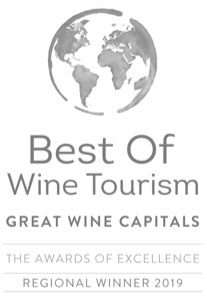Verona is not only popular for Romeo&Juliet, the Arena, the medieval Castles or Lake Garda but it is also known as one of the Great Capitals of Wine. In fact every year since 1967 in April the Fair Vinitaly occurs; this is the most worldwide known event of wines and their producers, with professional conferences and local celebrations around the city centre. Verona is one of the ten cities of the Gwc or Great Wine Capitals Global Network. The Northest province of Italy is one of the leading exporters of wine in Italy, with a 12% share of the export market. According to DrinkBuiness.com the Italian wine from Veneto accounts for around 9% of the regions total exports, and numbers DOCGs – Amarone della Valpolicella, Bardolino Superiore, Recioto della Valpolicella, Recioto di Soave and Soave Superiore – as well as 14DOCs within its province.

As stated by Maurizio Uglian, lectured of encyclical and territorial analysis of enology (Department of Biotecnologies of Verona University): ” We select companies that, regardless of the high quality of wine, have understood the importance of landscape, geographical, cultural, environmental, and sustainable elements and are able to promote and disseminate them. The consumer experience must be a moment of knowledge not only of the product, but of the context in which it is mature”. If you come to visit Verona you can explore Valpolicella valley that became famous because of its wine production. Its name evokes the ‘sweet flavours’ of the local wines, such as Valpolicella Classico e Superiore, Recioto and Amarone. In fact, if you take our Food&Wine Tour you will have the opportunity to taste some of these wines and definetely Amarone. In addition we also offer a tour in the beautiful countryside of Valpolicella, called Amarone Tour, which you could explore with a Minivan, a vespa or a bike.

The red Bardolino is produced from the same grapes of Valpolicella (Corvina, Rondella and Molinara) but because of the location of Lake Garda where the soil is different than the valley, the wine acquires a different flavour. It is good to know that Valpolicella wine is a red wine DOC or ‘Denominazione ad Origine Controllata’, which shows the quality assurance label for Italian wines. Then, Recioto is a very ancient one, which comes from grapes called Garganega and Trebbiano di Soave.

Its name comes from the dialect noun ‘recia’ which indicates the top side of the grape Garganega, the one which is most sun exposed. Amarone, instead, is a more recent wine, which has been trade for about 50 years. Its name comes from the italian adjective ‘amaro‘ which means bitter. During our Amarone Tour you will visit some of the local Cantine (Wine cellars), getting known about the process of making wine from our professional guides or local owners and in the end you finally taste some of the Valpolicella flavours.
But what about white wines?


Lugana, is produced between Verona and Brescia, near Lake Garda. It has a yellow colour with some greeny veins and a sweet flavour; it is served fresh at 9°C. Soave, instead, is another local white wine, which is typical of the area of Soave and Monteforte d’Alpone. If you like to visit the Lake again you will find another popular white wine: Custoza. This one is produced by the grapes Garganega and Trebbiano from the hills Moreniche of southern Lake Garda.

But wine sometimes is more appreciated if combined with some local tasty cheese. During our Food&Wine Tour in fact you will stop by la Botteghetta, a food shop behind Arena, and taste some cheese called Monte Veronese; while, during our Valpolicella Tour, you could visit a Cheese Factory called Caseificio Sapori del Portici. La Casara Roncolato, is another vey old cheese factory which was established in ’20 near Verona in the local area of Roncà. This family business is managed by the three gransons of the owner; they are still maintaining the old traditions of ripening (stagionatura). Nowdays the procedure is hand made to keep alive the artisian original tradition.

The most locally known cheese is Monte Veronese. This is exclusively produced with mountain raw milk. The crust is originally thick but it becomes thicker with ripening. In particular Monte Veronese of Malga is a product Slow Food. Its denomination DOP stands for Denominazione di Origine Protetta (Denomination of Protected Origin). Another very local cheese is Lessino di Capra, which is exclusiveley produced from goat milk. The crust is red and the dough has usually a soft flavour. For its name the origin comes from Lessini Mountain, that are the local mountain you can view from Lake Garda.








